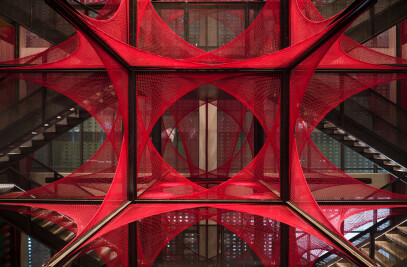“The ways of men are conditioned by those of earth. The ways of earth, by those of heaven. The ways of heaven by those of Tao, and the ways of Tao by the nature.” This is Laozi’s insight into the relationship between heaven, earth and man. When people are trying to restore their spirituality and humanity, they embrace a life close to nature based on the principle that “the ways of Tao are conditioned by the nature”, a powerful influence on the traditional Chinese aesthetic and artistic orientation.
A unique and profound spontaneous expression constitutes the aesthetic system of Chinese culture. Spontaneous expression emphasizes the spirit rather than the physical form and goes beneath the surface to reveal the very essence. This means understanding the inner self and going beyond the appearance in order to get closer to the essence of all things, which brings out artistic conception, integrates the aesthetic orientation of Eastern philosophy and becomes the ultimate presentation of thoughts.
In traditional Chinese ink landscape paintings, distance is created by three kinds of farness that focus on height, depth and levelness. In terms of space, blankness and the power and vigor of form and structure are the highlights. Ink is rendered clear, light, wet, thick, and charred. These represent the highest standards of traditional Chinese paintings in composition and use of ink, in perfect resonance with the space composition and use of black , white and grey in modern design language.
Ancient Chinese literati expressed their sentiments by depicting mountains and rivers. Heaven and earth make up their homes for communion with nature. Their Eastern view of nature and spirit have lived to this day, profoundly affecting the way of thinking, aesthetics and even lifestyle of the modern Chinese people. The literati gathering in Lanting is the most elegant one in ancient China highly extolled by later generations. The culture of Lanting has become an everlasting symbol of ideal life to the Chinese people.
Fully aware that “the ways of Tao are conditioned by the nature”, the designers Yi Chen and Muchen Zhang present new visual effect and spatial experience with an advanced experimental conception, the unbridled spirit of ink wash painting, and the deconstructionist techniques of expression. They draw inspiration from the forms of mountains and rivers and the charm of ink wash paintings, and incorporate the spontaneous expression of such paintings into the space via the humanistic spirit of Lanting.
In this artistic space, the designers pay full respect to modern Chinese people’s identification with and exploration of the traditional cultural values. Through artistic expression in the space, they elevate the humanistic spirit through symbolism as well as offer new understanding and interpretation of the concept of urban human settlement in the future.
As the scene unrolls in the space like a long scroll of landscape painting, the Eastern artistic conception for mountains and rivers is brought to life, along with the unique expression and ideas of China. The physical space embodies the invisible artistic conception. The traditional Chinese culture and spirit are reinterpreted in a modern deconstructionist language, with modern design language and installation art techniques to present a new ink wash space. Thus, a poetic ideal world somewhere between reality and imagination emerges.
Mountains and rivers are abstracted into geometric forms. Lanting is presented in the shape of a modern box to reflect the ideal dwelling of noble scholars who express their sentiments via the nature and the most symbolic spiritual home. The white linear framework symbolizes exuberant bamboos to create a poetic atmosphere.
The ten-meter linear bamboo installation produces different light and shadow in different periods of time as the light in the space changes, serving as the focal point of the whole space. As the embodiment of ideal and wish, the geometric “Lanting” symbolizes poetic dwelling and home of the soul.
When the viewers are immersed in the artistic atmosphere, their mind is communicating with the space in a subtle manner. The scene changes as they shift their positions. The white linear frameworks are reflected on the marble floor, symbolize bamboos are reflected in the water in pure tranquility.
The space goes beyond homogeneous design to strike a balance between individuality and commonality, between diversity and mainstream, between tradition and modernity, and between east and west. The distance in time is integrated into the space for a genuine state of “simplicity” and “seclusion”, a space that allows people to nestle in their spiritual world.
The illusory world created with symbolist techniques offers experience at both conscious and spiritual levels. It is a pure space where people have their minds emptied and cleansed. They may have dialogues with themselves and awaken to their unity with nature among the pure mountains and waters.
Material Used:
1. Oak plank -floor-YIJIAGUANGRUI
2. Whitelacquer- bamboo device- Guangzhou Riyun Decoration
3. Star stone-floor- Valls Stone
4. White matte paint –mountain-Guangzhou Riyun Decoration
5. Ink-jade stone-floor-YONGSHENGFUQIAO

































